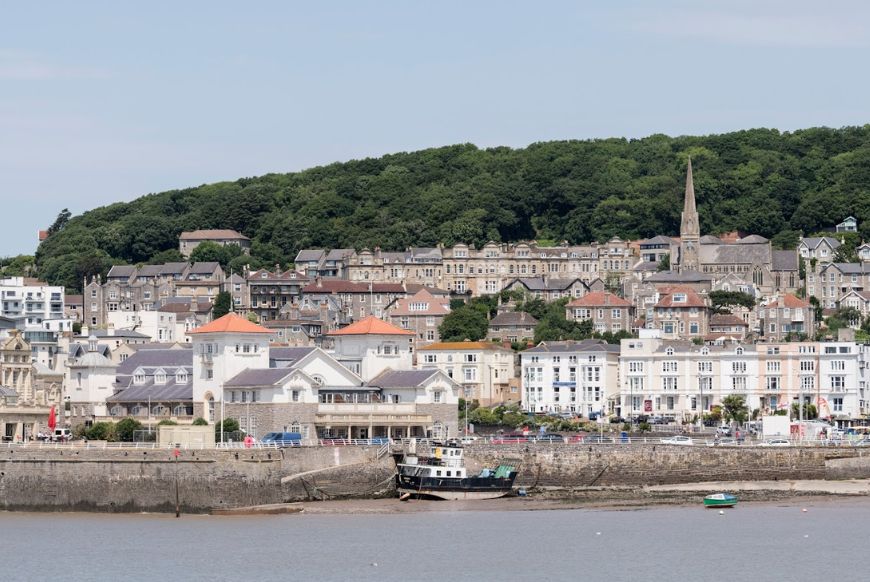Today (Thursday 17 July) Historic England is launching an interactive map of historic coastal landmarks, celebrating the country’s vibrant seaside heritage.
Historic England is asking people to contribute to the Missing Pieces Project, adding to the story of coastal places that hold a special place in their hearts and minds.
The map celebrates nearly 300 years of seaside history, from elegant Victorian piers to beloved 20th century amusement parks, in seaside destinations that continue to welcome millions of visitors each year.
From piers and pavilions to beach huts and bandstands, lidos and lighthouses, the project celebrates the evolution of Britain's seaside resorts from health retreats for the Victorian wealthy to holiday destinations for everyone.
People across the South West are encouraged to submit photographs, drawings, written information or audio recordings about coastal landmarks that hold personal significance – whether it's a childhood holiday destination or a local landmark that symbolises home.

Image - Weston-super-Mare’s architecture, seen from the end of the Grand Pier
Comments
Heritage Minister, Baroness Twycross, said: "Our seaside communities play a huge role in telling our national story. I encourage everyone to contribute to the Missing Pieces Project to preserve the history of our coastal towns and breathe new life into their future."
Duncan Wilson, Chief Executive, Historic England, said: "Our seaside places hold a special place in our national story, yet the full richness of their heritage cannot be captured without the first-hand accounts, images and memories of those who've experienced them. I encourage people to contribute to the Missing Pieces Project, so we can all help ensure these treasured coastal landmarks are celebrated."
Look Out for Seaside Landmarks in the South West this Summer
Historic England’s new interactive map shows the listed places – including rollercoasters, bathing pools, railway stations, chalets, public gardens and more – that can be found around England’s coastline, including, in the South West:
Jubilee Pool, Penzance, Cornwall (Grade II listed)
Built in 1935, this striking Art Deco lido is one of the finest surviving examples of its type. The seaside lidos of the 1920s and 1930s transformed sea bathing from a health pursuit to a leisure activity, emulating the fashions of continental Europe.
Princess Gardens and Royal Terrace Gardens, Torquay, Torbay, Devon (Grade II registered)
The Princess Gardens, with its colourful flower beds, ornate fountain and lawns, was opened on 1 June 1894. It was the first public garden in Torquay to be laid out by the municipal authority. The Royal Terrace Gardens, a series of terraced walks along the face of Waldon Cliff, was planted with a collection of exotic plants and palms. The original layout of these Victorian seaside gardens is largely unchanged today.
The Cobb, Lyme Regis, Dorset (Grade I listed)
Lyme Regis’ harbour wall, called The Cobb, was built as a breakwater to protect the town and ships in the harbour. The Cobb was destroyed by storms and rebuilt many times, particularly after the great gales of 1824. Victoria Pier, named after Queen Victoria, who visited Lyme Regis as a Princess in 1833, offers a stunning panoramic view. The Cobb features in Jane Austen’s novel ‘Persuasion’ and in the film adaptation of John Fowles’ ‘The French Lieutenant’s Woman’.
Neck or Entrance Building at Boscombe Pier, Bournemouth, Dorset (Grade II listed)
The distinctive ‘boomerang’ shape of the Entrance Building at Boscombe Pier was created in 1958-60. Its design reflects the revitalisation of English seaside resorts and the vibrant, optimistic and joyous designs of the 1950s. It is a rare example of pier architecture of this time. The building is home to a café, takeaway and beach shop and the entry point to Boscombe Pier, which has undergone significant restoration.
Share your Seaside Stories and Memories
The stories of these historic seaside places are still being written – and they won’t be complete until you share your memories and first-hand experiences of these gems. Go online and share at https://historicengland.org.uk/SeasideStories
We’d love to see your photos and memories so that visitors to the Historic England website can learn more about what makes these places special. Perhaps there’s a local landmark that means home to you, or a special place that shows you’ve reached your favourite holiday destination once again. Maybe there are local maritime traditions to be shared that have been passed down the generations, or a quirky mid-century marvel that brings a smile to your face.
Your view of a place is as unique as you are, so every snapshot and story you add is an important piece of the picture. You could add photos, audio, text, drawings and more.
The Missing Pieces Project recognises that every person’s connection to these historic places adds a unique dimension to their cultural importance, helping to build a more complete picture of England's cherished seaside heritage.
Related
Comments
Comments are disabled for this post.











